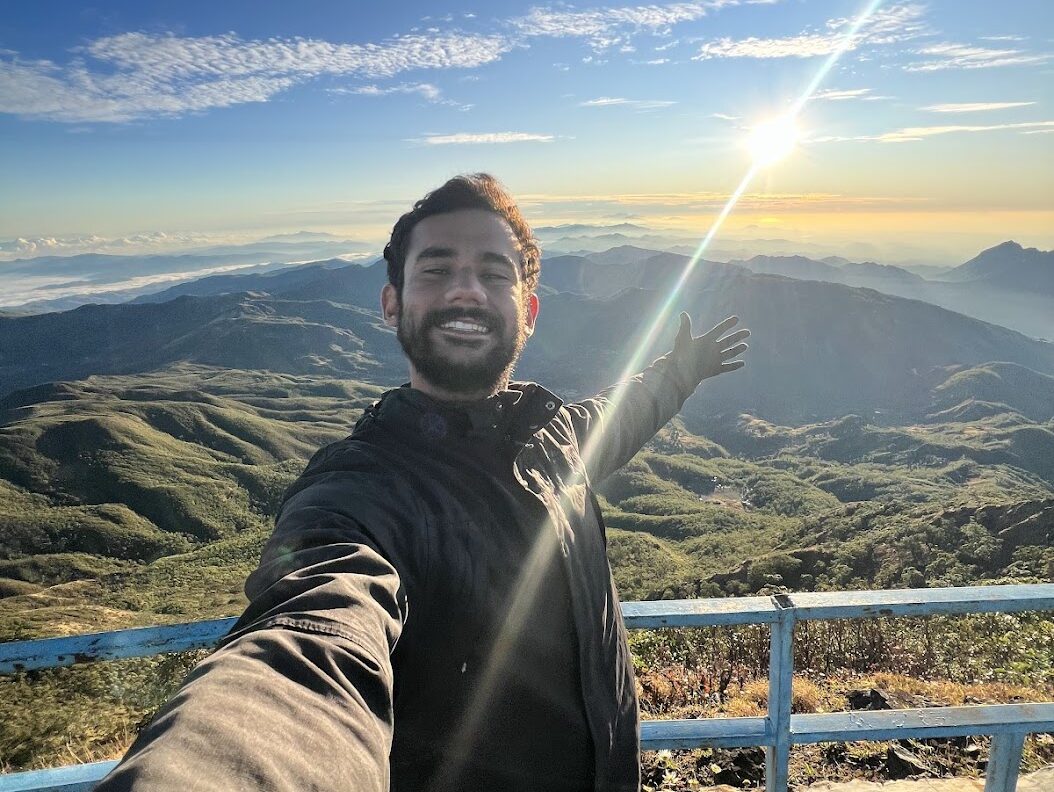One Week in Timor-Leste: Coastlines, Chaos, and the Country’s Highest Peak
Most people skip right over Timor-Leste when traveling Southeast Asia, but after a week of unexpected adventure, I can promise it’s worth a stop. From empty beaches and sacred islands to wild roads and unforgettable mountain views, this is what one chaotic, beautiful week looked like.
Need a Place to Stay? Here’s some of my favourite places to stay in Dili
$$$ Palm Springs Hotel Dili – Click here for rates and availability
Basic Info and Logistics in Timor-Leste
Getting There
Flights into Dili are few and overpriced. As an overlander, I entered via the land border from Kupang, Indonesia. From the Bimoku Type A Bus Terminal, two companies: Babadok Express (+62 896 6928 4879) and Bagong (+62 813 9997 7702) offer buses for 350k IDR (~$20), departing early morning. I went with Bagong at 6:30 am, texting them the day before, and paying in Indonesian Rupiah before departure.
Leaving Dili was trickier. Both companies raised the price: Babadok charged $35 and Bagong $30 (USD only). I found a cheaper option through Timor Tour Bus (+670 7787 2929) for $23. It was a minivan, left 1.5 hours late, and I had to go to the office and pay the day before, but it saved me $7.

Visa & Entry Info
This was a bit confusing because the proper Timor-Leste government website has conflicting information about visa-free status at land borders. I stamped out of Indonesia with my Canadian passport and entered visa-free on my Italian one. It worked, and I got 90 days. For Canadians and Americans, you can get a visa on arrival at the land border.


Currency & Cash Warnings
Timor-Leste runs on USD, and almost everywhere is cash only. I brought USD with me, which helped, because almost no ATMs accepted my Mastercard. I finally found one behind the Timor Plaza that worked. Most ATMs only take Visa, so plan ahead.
Internet Access
I bought a local SIM card in Timor Plaza (one provider required a passport, one didn’t). Outside of Dili, the card was basically useless. Wifi was rare — even my hostel didn’t have it.
Accommodation
In Dili, I stayed at DaTerra Hostel for $12/night and usually had the dorm to myself. It included breakfast and had a great vibe.
Outside of Dili, I found homestays on the street or on Google Maps. There are only two properties on Booking.com that aren’t in Dili, both in Baucau. In Com, I found one with meals included for $20/night. In Hato Builico, I stayed at Pousada Alecrim Namrau — a mansion with 20 rooms, rats, and bed bugs. Charming.
Transportation
Intercity transport in Timor-Leste is chaotic. Inside Dili, microlets (minibuses) work well and are easy to use (map). Just wave one down and tap a coin on the metal bar to get off. Important: they stop running around 6 PM and turn into taxis, which cost up to 50x more. I learned this the hard way after sunset at Cristo Rei.
To explore the country, I rented a motorcycle for $20/day, pricey by SE Asia standards. There are only a few shops in Dili. Mine even asked me to return the bike clean (+670 7409 0999).

Day-by-Day Breakdown
Day 1: Arrival
I landed late at night, grabbed some street food, and headed straight to the hostel to crash.
Day 2: Exploring Dili
I started the day by getting a SIM card, then hopped on a microlet downtown. I checked out the Igreja de Santo António de Motael, wandered through the Mercado de Tais, and visited the Catedral da Imaculada Conceição. From there, I made my way to the Museum of Resistance, the Palácio do Governo, and finally, Largo De Lecidere. I ended the day watching the sunset at Cristo Rei — beautiful, but by then the microlets had stopped running. I ended up walking home for three hours.


Day 3: Atauro Island
I took the public ferry over to Atauro Island for $5. The ride took two hours. Once there, I rented a snorkel from Barry’s Place, swam for a while, and grabbed lunch at the local market. If I had more time, I definitely would’ve stayed overnight; the waters around Atauro are some of the most biodiverse in the world.

That night, back in Dili, I visited the Timor Plaza Night Market. It felt a little more polished than typical Southeast Asian markets, with lots of foreigners. That’s where I got bitten by a stray dog. Some locals stepped in and chased it off.

Day 4: Road Trip East
I started the morning at the hospital to check on the dog bite. Timor-Leste is technically rabies-free (except Oecussi), and the vaccine wasn’t available unless you went to a private clinic. It was a Sunday, so everything was closed. I decided to take the risk. I’m still alive.


After that, I picked up my rental motorbike and hit the road east toward Com. The ride was a mix of epic coastal views, quiet beaches, and very rough roads. I found a guesthouse in Com that charged $20, meals included.
Day 5: Sacred Island & Return
I continued from Com over to Fuiloro on a decent road, then one of the worst roads I’ve had to drive on up to Mehara. There is a random stretch of paved road at the end of the way down to Valu Beach. From there, I paid some local fishermen $10 to ferry me to Jaco Island. I was the only person on the entire island and had some beautiful beaches to myself. Just me and perfect white-sand beaches.

On the way back, I got lost trying to find the trail to Lene Hara Cave. It took me until 4 pm to find the first restaurant. I drove all the way back to Dili that evening. An interesting thing to note is that any town outside of Dili doesn’t have any restaurants or grocery stores, and you can only get food cooked for you at a homestay.

Day 6: Mountain Mayhem
This was the day I went toward Mt. Ramelau. It started pouring rain, and I ended up crashing my motorbike, the first time I’d done that in a year of riding in Southeast Asia. Thankfully, some locals helped me out with first aid.

Google Maps said I had 22km and 1:10 mins to go, which I thought was crazy slow, until I did it and it took me 2 and a half hours! The “roads” were the worst I’ve ever driven. I got the bike stuck multiple times, the rain didn’t help, and I couldn’t check my phone for alternatives. The last 3km were on a walking trail. I then struggled to find a place to stay, which for $20 included dinner and a bed.

Day 7: Mt Ramelau Hike
I woke up at 4 AM and started hiking up Mt. Ramelau. The trail was 4.3 kilometers long with 700 meters of elevation gain, and it took me about an hour and ten minutes. Locals say it takes four hours and that you need a guide; you don’t. The sunrise from the summit, Timor-Leste’s highest point, was worth every step. On the way back, I rode through Maubisse, where I finally found something to eat.

Day 8: Exit
I got picked up at Timor Plaza for the long ride back to Kupang.
Final Thoughts
Timor-Leste is raw and rugged — a place where plans rarely go right, but you’ll remember every wrong turn. It’s not the easiest country to travel in, but it just might be one of the most memorable.



